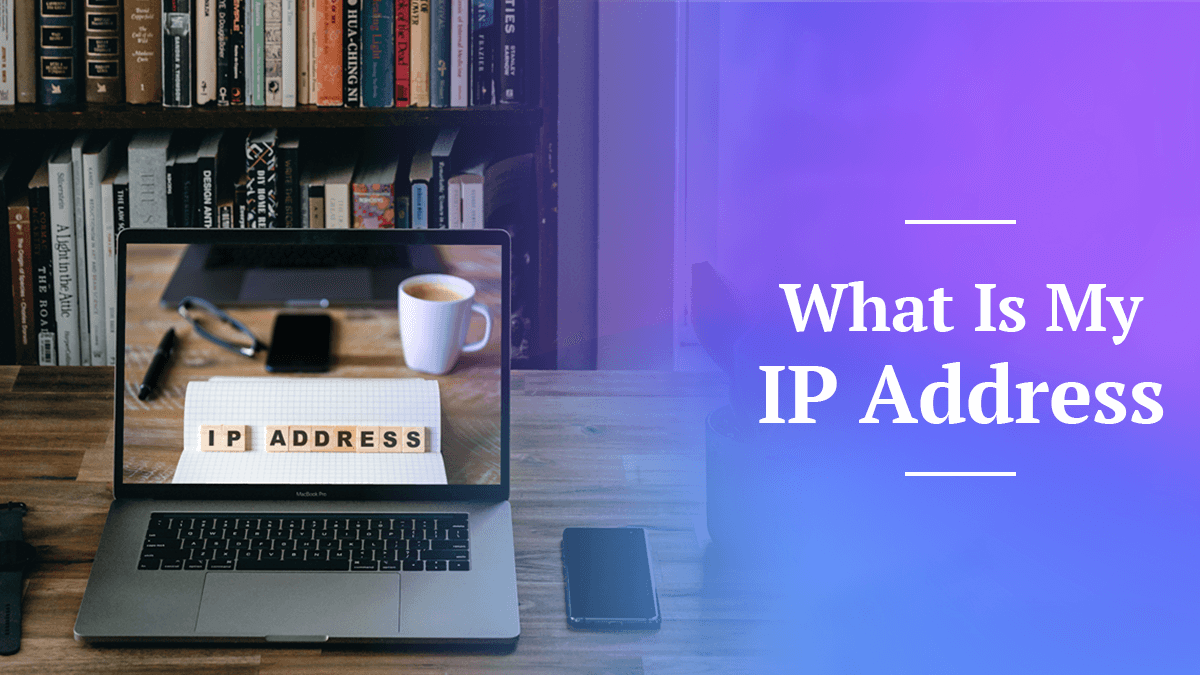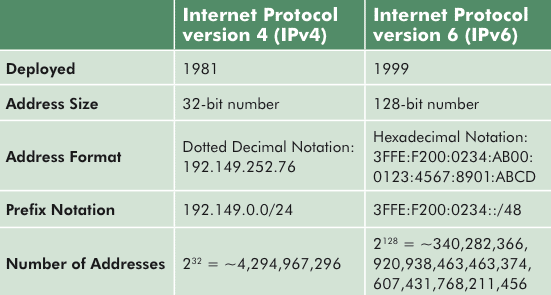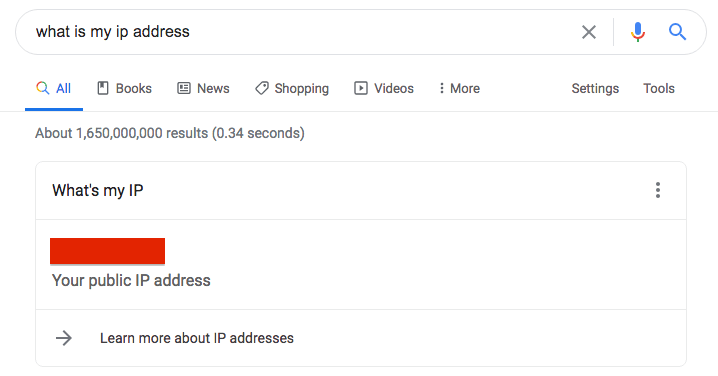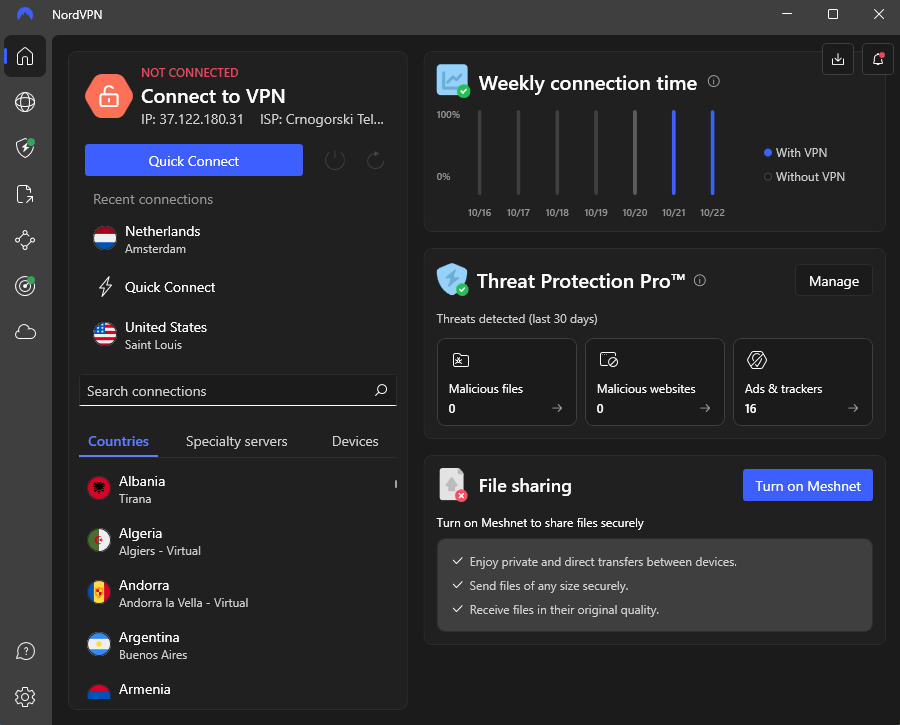
What Is My IP Address? The Info You Need in 2025
Here’s your IP address, but read the full article below to learn how to hide your IP address and why that might be important.
Your IP address is a unique identifier of your online presence. You can find your IP address by simply Googling it, and mask it using a virtual private network (VPN). My favorite VPN is NordVPN, which you can try using a 30-day money-back guarantee.
There was a time — not so long ago — when if you didn’t plan to make your living at IBM or HP, you could go your whole life without ever knowing your IP address. Heck, you’d probably be fine without even knowing what an IP address is.
But as Bob Dylan sang (more or less): “the internet times, they are a-changin’.”
If you want to browse the internet safely today, it’s imperative that you at least understand the concept of an IP address. If you don’t, you’ll never be able to tell exactly what information you’re broadcasting to the World Wide Web.
- Best to hide your IP address
Information is a two-way street. To butcher another famous quote: “When you gaze into the internet, the internet also gazes into you.” With access to your IP address, your internet service provider (ISP) can pinpoint your location and can provide that information to third parties at will.
Knowing your IP address is the first step in the battle to take back your safety. Once you know your IP address, you can test to see if your security measures are masking it successfully — or whether your information is still exposed. Learn more in our digital security guide.
What Does an IP Address Mean?
An IP (Internet Protocol) address is a number given to a device that can connect to a network. It’s used as a “name tag” for that device so it can receive information from other nodes of the network, in much the same way your home address routes your mail to you.What Is the Difference Between a Public IP Address & a Private IP Address?
A private IP address is given to a computer on a closed network. Computers at a school, the office or other organizations will sometimes be linked to each other, but not the wider internet. A public IP address is given to devices that can connect to the World Wide Web. They’re usually dynamic (capable of changing) and are assigned by an internet service provider.
What Is My IP Address and How Do I Find It?
What Is an IP Address?
Let’s start at the beginning and explain what an IP address actually is.
IP stands for Internet Protocol. “Internet” is, well, the internet, and a “protocol” is a set of rules everybody has agreed on, so we’re able to havean internet. An IP address is a standardized fingerprint assigned to any device that can access a global network.
It’s not that different from snail mail. Every city and town in the United States has agreed to structure its addresses in a certain way: street number and name (or P.O. box), city or town, state code, ZIP code.
If one town in Ohio decided to change all its addresses to a format like, “The red, brick house next to the Petersons’ place, you know, kind of near the park,” the USPS would quickly cut them off out of frustration. But because everyone follows the protocol, everyone can get mail.
There is one important difference between IP addresses and mailing addresses: IP addresses aren’t fixed. It is possible to have a computer with a so-called static IP address, but it’s much more common on a closed network, like you might have encountered at your office or school.
IPv4 vs IPv6
Bear with me. It’s about to get a little math-y.

There are two formats for IP addresses: IPv4 and IPv6. IPv4 addresses look something like: 19.230.32.74.
IPv6 addresses look more like what a modem would shout if it stubbed its toe: a881:096e:e6ac:c6f8:0388:17f7:b790:a9de.
When we first started connecting machines at a large scale, all IP addresses were in IPv4 format. Each IPv4 address is made up of four 8-digit binary numbers in a row, which works out to 4.29 billion possible IP addresses.
Sounds like a lot, but it’s just over half the human population of Earth. As the internet grew up and ate the world, running out of unique IP addresses became a real danger.
Computer scientists solved it by migrating to IPv6. By adding more data bits to each address, IPv6 boosts the number of possible IP addresses to a little more than 340 trillion trillion trillion — or 340,000,000,000,000,000,000,000,000,000 — which I think we can all agree is enough to tide us over for now.
So that’s why your IP address looks like keyboard vomit. Now, is this critical information for securing your online information? Not necessarily — but when people are waiting to profit off your ignorance, there’s no such thing as being too well informed.
What Information Does My IP Address Give Away?
Let’s recap what we’ve learned so far. Your IP address is a set of numbers that identifies your device as a unique entity on the internet. When you visit a website, it notes your IP address, then uses it to send you the content you’ve requested.
For example, if you visit a website with a subscription area, the server might see your IP address and remember that you asked to remain logged in.
Browsing without an IP address is essentially impossible; in order to work, it has to be a unique, personal identifier. That’s where the double-edged sword aspect comes in.
Your IP address is clearly visible whenever you’re online. Now, this isn’t always the security risk it might seem. Most of the time, your ISP acts as an intermediary: websites see your ISP’s IP address, then they send information there for your ISP to send onward to you.
However, there are two reasons not to trust this system:
- ISPs are tied to geography. Just from knowing what ISP someone uses, you can narrow down their location to a city — and sometimes even further.
- The ISP itself has a much more exact location for you. They can’t all be trusted with this information.
Imagine you’re charged with a crime. The investigators want your internet history, so they serve your ISP with a subpoena. Not wanting to get in trouble themselves, the ISP coughs it up.
To be fair, some people caught this way will be evildoers who deserve to face justice. But what if your “crime” is nothing more than disagreeing with a repressive government?
IP addresses give out more information than we’re comfortable leaving in a third party’s hands. The good news: there are ways to fight back.
How Do I Locate My IP Address?
To hide your IP address, the first step is figuring out what it is. To do this, follow the steps of this intricate process:
1. Google it
Yeah, it seems like it should be more complicated, but that’s literally all you need. Type in “what is my IP address,” and Google will return the public, dynamic IP associated with your router. Unless you’re using a VPN or proxy (more on that in a minute), it should be accurate.

Another option is to check the fun tool at the top of the article.
If you want a bit more detail, some other tools on the internet will attempt to approximate your location using your public IP. This is a good way to see how close hackers or other malcontents can get to finding out where you live.
Can I Hide My IP Address?
Absolutely!
Hiding your IP address is not only possible, it’s the best way to browse the internet anonymously. If you conceal your IP, not even the police should be able to determine where you’re browsing from.
If you decide to do this, you’ve got to be thorough. Proxy servers can hide your IP by “laundering” your connection through an intermediate server, but it’s too easy to follow the signal one step further to find your real address.
Onion routing might be a bit more secure, but you’re trusting anonymous volunteers not to screw with you. If you’re using Tor (a web browser that disguises activity by running through a decentralized volunteer network), some websites will block first and ask questions never — there’s too much risk of some troll attaching malware to your request en route.
Our opinion is simple: the only way to stay both safe and secure when browsing is to use a VPN. Be sure to read our are VPNs safe guide to learn more.
Why VPNs Are Great
A VPN, or Virtual Private Network, is a bit of software that lets you keep your IP address secret by hiding it from your ISP.
If you’ve been paying attention so far, you might be wondering how that’s possible. Didn’t I just say that your ISP determines what your IP address is? How could they not know it?
Yes, dynamic IPs do come from your internet service provider — but they don’t assign an IP to your device. Instead, they assign it to the device making a request. See the difference?
Now, imagine if there was a middleman who could make requests on your behalf. It would be like sending your friend to the taco truck because you’re embarrassed that you’ve already been four times this week (just a totally random example, not drawn from experience).
That’s what a VPN is. It’s software that lets you send website requests to one of its servers, rather than a server belonging to your ISP. When the VPN sends the request along, all the ISP can tell is that somebody using a certain VPN asked to see certain websites. Since there are several reputable VPNs, this won’t be grounds for instant blocking, like Tor can be — learn more in VPN vs Tor guide.
There’s one more key element, though. If a VPN did nothing but add an extra step to your connection, it could be traced back to you; that’s what a proxy server is, and it’s why we don’t recommend them.
To keep you anonymous, a VPN also features encryption (read the VPN encryption guide to learn more). All traffic you send through a VPN is translated into a code that can’t be cracked by anybody without the key. The best VPNs use AES-256, a code that can only be broken with a planet-sized supercomputer and 10,000 years of free time.
How to Hide My IP Address Using a VPN
To use a VPN, all you have to do is download a trustworthy VPN app, open it on your desktop, and use it to connect to a server in your general area. Most VPNs are designed for casual users, so the interface should be very simple (two or three clicks at most).
We like NordVPN , which offers the best balance of price, user-friendliness, features and speed. Surfshark and ExpressVPNare also great choices, and if you don’t want to pay, you can’t go wrong with Windscribe’s free plan.

Here’s how to do it in more detail:
1. Download & install a VPN
Select a VPN, then follow the download and installation instructions on its website. The best ones make the process simple and hassle-free. (Note the corollary: if a VPN is a struggle to download, chances are it’s not worth your money.)
2. Open the VPN & connect to a server
Most VPNs have a server selection menu on their main control panel. To get the best speeds, choose a server close to your actual location. However, there are times when you might want to spoof a server in another country instead — such as if you want to watch content that’s only available there.
3. When the VPN has connected, open your web browser
You can now browse in peace, knowing neither your ISP nor anyone else can spy on your web traffic.
Final Thoughts
One last note on hiding your IP address. We strongly recommend using a VPN to browse anonymously. However, there’s one party you can’t hide your IP address from: the VPN itself.
A VPN needs to know your real IP address to connect you with its server network. The best VPNs acknowledge this with strict no-logging policies, swearing they won’t save the data they use to get you online.
Adopt a trust-but-verify attitude toward VPNs. Before picking one, check the news to see if it’s been busted for secretly selling data to third parties. If a VPN is cheating, word gets around pretty fast.
As long as you’re careful, there’s no reason to fear being online. Knowledge is your greatest weapon against breaches of your privacy. The people that want your data — hackers, advertisers, governments — are counting on you not to arm yourself with information. By understanding your IP address, you’ve taken your first step toward real safety.

Leave a Reply